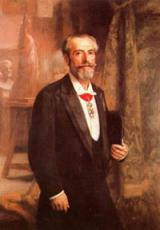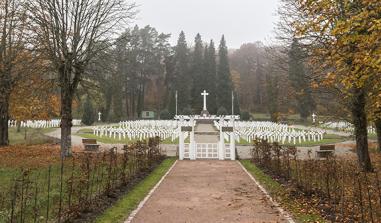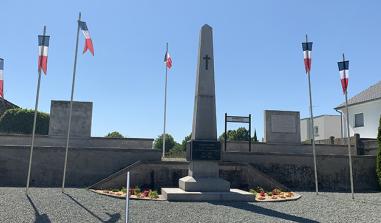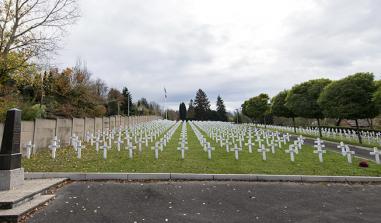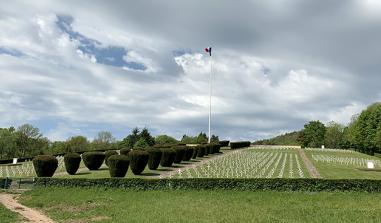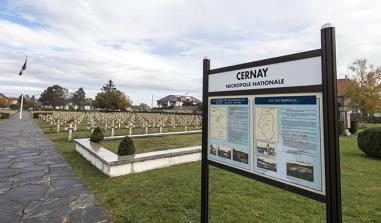Bartholdi Municipal Museum, Colmar
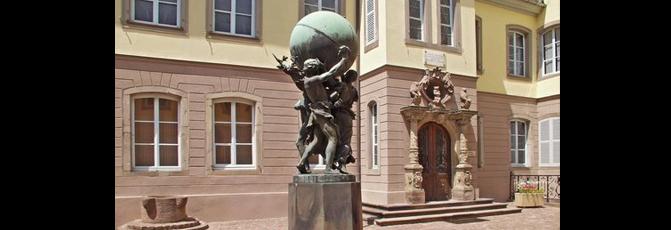
Entrée du musée. Source : Office de Tourisme de Colmar - ©Christian Kempf/STUDIO K
The Bartholdi Museum houses a considerable collection of sketches, models, sculptures and other items produced by the creator of the 'Liberté Eclairant le Monde' statue in New York, better known as the Statue of Liberty, and the Lion of Belfort.
Deeply affected by the Franco-Prussian war of 1870-1871 in which he was actively involved, notably alongside Garibaldi, and devastated by the loss of Alsace, the region in which he was born, Auguste BARTHOLDI (1834 - 1904) created many works related to this conflict. Here is a brief introduction to his creations and to the museum dedicated to one of the most important exponents of sculpture in the 19th century ... Located at 30 rue des marchands, in the sculptor's childhood home - a vast 17th century private hotel in the centre of Colmar - the Bartholdi Museum houses the largest collection of sketches, models, and sculptures but also drawings, photographs and paintings produced by the creator best known for his Statue of Liberty and Lion of Belfort.
The decision to create a museum devoted to the famous sculptor dates back to 25 June 1907, when Jeanne-Emilie Bartholdi, the artist's widow, decided to bequeath the ancestral home on rue des Marchands to the town of Colmar, on the condition that the town would make it into a museum to protect and exhibit all the "furniture, sculptures, architectural works, paintings, engravings, objects of art, the library, etc." found at the time of his death in his house at 82 rue d'Assas in Paris, the address of the sculptor's last flat and workshop.
Although Jeanne Bartholdi died on 12 October 1914, the public had to wait until 18 November 1922 for the inauguration of the new museum. Spread over three floors, it occupied the north and west wings of the building. A series of photographs that were fortunately saved bear witness to the very first layouts of the permanent exhibition halls that mainly aimed to recreate the very Parisian and opulent lifestyle led by the artist in his childhood home. Thanks to a very praiseworthy museum technique, the grand hall on the ground floor, known as the "hall of models", was allotted to the meticulous presentation of a vast collection of models of statues and monuments (in terracotta, grey clays and plaster) created by the sculptor. Unfortunately, the increasing and widespread disinterest in 19th century art shown by many intellectuals and most of the museum visitors during the 20th century in general led to the "hall of models" being allocated for temporary exhibitions of modern regional artists and Bartholdi's works being relegated to various storage areas, a decision that was not without damages and losses. The building was even temporarily closed before reopening again in 1979. Since then, the renovation and extension of the permanent exhibition halls, the restoration and acquisition of works and the organisation of themed exhibitions with associated catalogues have all contributed to the conservation of the collections and the renown of the name of Auguste Bartholdi.
Visitors enter the museum courtyard via a covered passageway. At the centre of this courtyard lies Bartholdi's bronze group statue, 'Les Grand Soutiens du Monde' (The World's Great Bases) representing Justice, Labour and the Motherland, which was exhibited at the 'Salon de Paris' in 1902. The main entrance to the museum is located to the right of the courtyard. It is a Renaissance doorway, brought to Colmar and installed in the second half of the 19th century by Bartholdi during the refurbishment of the family home with three overhanging sculptures in moulded concrete, Bartholdi's work, representing two heraldic lions flanking a human-like ram. Inside, the museum occupies 3 stories and a total surface area of 700 m². On the ground floor, the Hall of Artworks from Alsace and Colmar unites Bartholdi's work linked to his native region - 'La Borne Frontière' (the border milestone), 'la Malédiction de l'Alsace' (the curse of Alsace) or 'la Suisse secourant les douleurs de Strasbourg' (Switzerland aiding the suffering of Alsace) - as well as models and certain original elements of monuments erected in Colmar (Monument Rapp, Le Petit Vigneron, Les Grands Soutiens du Monde, etc.).
In the left wing on the first floor are Bartholdi's living quarters, which include his office, a music room and notably the very elegant dining room with a coffered ceiling encrusted with China. It is also in this room that the visitor will find a series of portraits of Bartholdi's ancestors from between the 17th and 19th centuries. On the central table and the sideboards are china dishes and ceramics signed by Théodore Deck, the director of the Sèvres china factory and Bartholdi's friend. Finally, the Napoleon III room contains a large portrait of the sculptor's mother Charlotte Bartholdi, painted in 1855 by Ary Scheffer, as well as portraits of Auguste Bartholdi and his wife, painted by Jean Benner an artist from nearby Mulhouse.
The right wing of the house leads into the library, then on to the rooms containing Orientalist artworks allotted to the works produced by the artist during and after his first trip to the Orient (Egypt-Yemen, 1855-1856). On this floor, the visitor will also find the impressive hall of models containing models of most of the statues and public monuments created by Bartholdi for French towns, with the exception of Colmar: Vauban (Avallon, 1873), Gribeauval (Paris, courtyard of the Hôtel des Invalides, 1876), the Lion of Belfort (1880), Rouget de Lisle (Lons-le-Saunier, 1882), Diderot (Langres, 1884), Gambetta (Sèvres, 1892), Monumental Fountain (Lyon, place des Terreaux, 1892). It also contains numerous rough preparatory models in terracotta and a series of bronze models: The Lion of Belfort, the Statuette Equestre de Vercingétorix, Les Sept Souabes (1855), Le Génie Dans les Griffes de la Misère (1859), Statuette of Vauban (1870) and the Statuette du Fondeur Thiébaut (1899).
Finally, the second floor is totally devoted to American artworks. The visitor will discover original models, prints and old photographs related to the fountain in the Botanic Garden (New York), the low reliefs of Battle Street Church (Boston), the monument to La Fayette and Washington (New York and Paris), not forgetting, of course 'La Liberté Eclairant le Monde' (New York), better known as the Statue of Liberty. In stark contrast to certain bland museums built nowadays, the museum dedicated to Bartholdi has a soul. Through the works on display, it plunges the visitor into 19th century history, at the heart of the Third Republic born of the Franco-Prussian war of 1870-1871.
Guided visits for groups in French, German, English, Italian, and Japanese on appointment through the Tourist Office Museum opening hours: Daily except Tuesday from 10:00 to midday and from 14:00 to 18:00 Closed in January and February and on 1 May, 11 November and 25 December Admissions:(ticket desk closes 1 hour before museum closing time) Individuals Adults: €4.10 Students: €2.50 Groups (10 persons +) Adults: €2.60 Students: €1.50 Free for children under 12 years old Contacts: Musée Municipal Bartholdi 30, rue des Marchands 68000 Colmar, France Tel.: +33 (0)3 89 41 90 60 Fax: +33 (0)3 89 23 50 77 E-mail: musees@ville-colmar.com
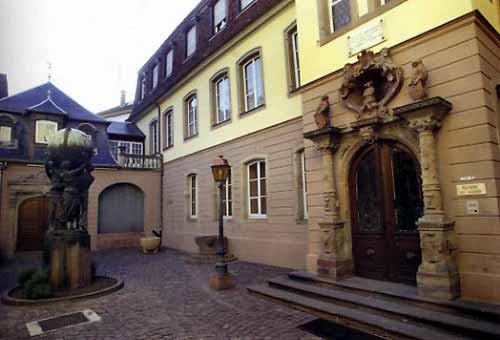
Entrée principale du musée Bartholdi. Photo Jean-Marc Hedouin
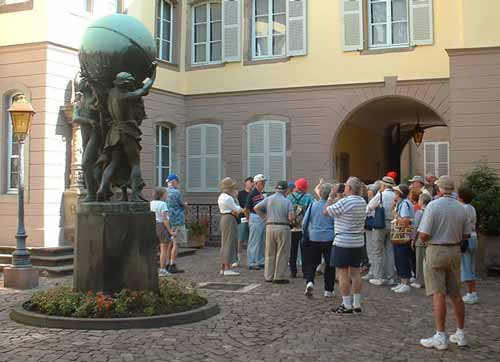
Les grands soutiens du monde dans la cour du musée. Photo Laurent Ghesquière
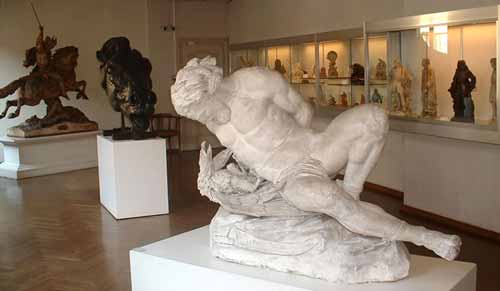
La grande salle des maquettes. Photo Laurent Ghesquière
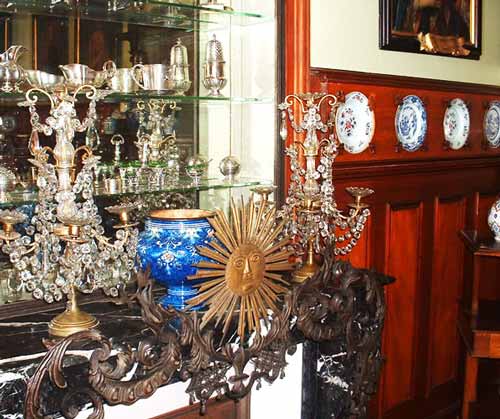
La salle à manger. Photo Laurent Ghesquière
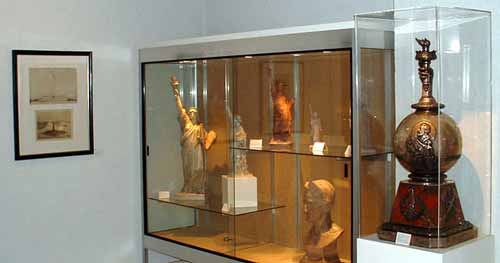
La salle américaine. Photo Laurent Ghesquière
Practical information
30 rue des Marchands 68000
Colmar
tél. : 03 89 41 90 60Fax :03 89 23 50 77
Tarifs individuels Adultes : 4 € Étudiants : 2,50 € Tarifs groupes (à partir de 10 personnes) Adultes : 2,60 € Étudiants : 1,50 € Gratuité pour les enfants de moins de 12 ans
Ouvert tous les jours, sauf le mardi de 10 à 12 heures et de 14 à 18 heures
Fermé en janvier et février ainsi que les 1 mai, 11 novembre et le 25 décembre


